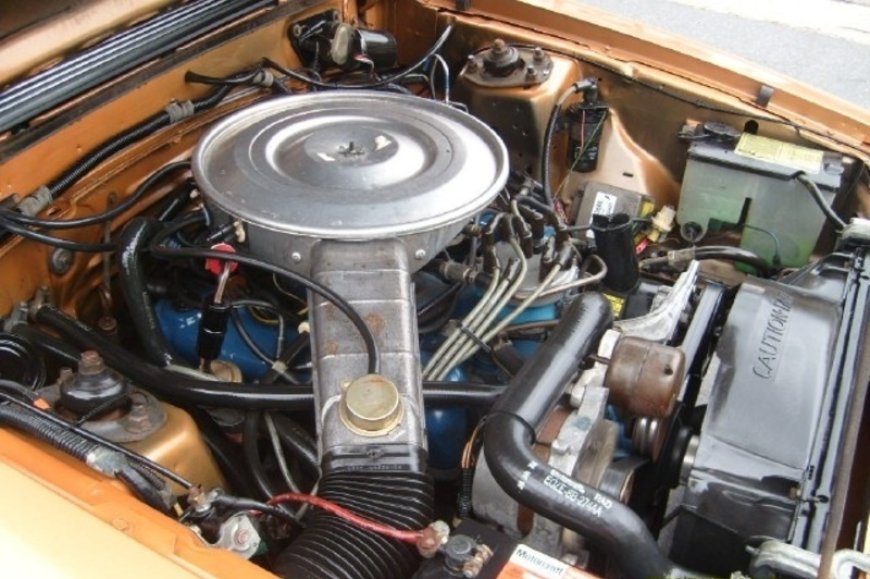The Ford 4.2-Liter V-8 Has No Respect For A Reason
Ford’s small-block V-8 family has enjoyed a successful run. From the original 1962 221-cu.in. V-8 that was available for the Ford Fairlane and Mercury Meteor to the iconic 302-cu.in. unit that is still available from Ford as a crate engine to this day, millions of Ford cars, trucks and vans have been motivated by some… The post The Ford 4.2-Liter V-8 Has No Respect For A Reason appeared first on The Online Automotive Marketplace.

Ford’s small-block V-8 family has enjoyed a successful run. From the original 1962 221-cu.in. V-8 that was available for the Ford Fairlane and Mercury Meteor to the iconic 302-cu.in. unit that is still available from Ford as a crate engine to this day, millions of Ford cars, trucks and vans have been motivated by some version of the same engine family. Whether it was a pedestrian example that used its torque to move a Mercury Grand Marquis along with little drama or the iconic, hell-raising Boss 302 that made its name in the Trans-Am racing series, a Ford small-block is a welcome sight under the hood.
Usually.
The Black Sheep Of THe Small-Block Ford Family

For every rule, there is an exception, and for the Ford small-block, that exception is the 255-cu.in. variation that was sold in cars and trucks from 1980-’82. Unlike the 260-cu.in. and 289-cu.in. V-8s that had come before, the 255 has exactly zero performance bent to it whatsoever. It was a crisis engine, the product of committees that were trying to satisfy government regulations and the cry for fuel economy. It is unique and different enough that even the most dedicated hot-rodder has consigned it to the scrap bin every time. Don’t believe me? Search out information on how to hop-up the 4.2-liter V-8 and you’ll find a repetitive statement, over and over: “Throw it in the trash and get yourself a 302.”

Aside from the V-8 sound, there isn’t much going for the 255. It is unique enough that you can’t throw the parts book at it and build a small-displacement screamer. Unless it is in perfect running condition, and you aren’t in any hurry to swap to a Ford V-8 that has more capability and more parts availability, chances are good that even the most ardent restoration candidate will be tempted to replace what may be the most derided smog-era V-8 to come out of Detroit with anything else.
The 255’s Reason For Being Asthmatic
At first glance, telling the difference between a 302 and a 255 isn’t easy. The external dimensions and accessories are shared with other small-block Fords of the era, and the 2-barrel Motorcraft 2150 (or variable-venturi carburetor for California-sold examples) aren’t unique to the engine.


The first tell-tale sign that you have the smaller engine is the intake manifold. Unlike every other small-block Ford, the 255 uses an open-runner intake manifold design and a valley tray, like what you would find on a big-block Chrysler V-8. Pull the intake manifold off and you will be greeted with oval intake ports instead of rectangle ports. You can even see the bosses for the rectangle ports on the cylinder heads.
Those heads are the main sticking point from a hot-rodding perspective. “Well, it’s still a small-block Ford, so why wouldn’t you use the heads off of a 302?” The answer involves the valves and the smaller cylinder bore. Let’s compare the 255’s “E0SE-AB” cylinder head against the 1979 “D9AE” cylinder head as an apples-to-apples comparison of smog-era Fords. The D9AE featured 67- to 70-cc combustion chambers and 1.780 intake/1.450 exhaust valves.




These larger combustion chambers were designed to lower compression, allowing the use of low-octane, low-lead or no-lead fuels. By comparison, the E0SE-AB has a 53- to 56-cc combustion chamber and 1.680 intake/1.460 exhaust valves. Combine those features with the restricted intake ports and you wind up with a small-block that can barely breathe.
Another item of curiosity is the crankshaft. The 255 uses a hollow-core nodular iron unit that was meant to reduce the total weight of the rotating mass. While the crankshaft is about five to six pounds lighter than a stock 302 crankshaft, there is enough concern in the Ford performance communities about the perceived strength of the crankshaft that many avoid it.
Is There Any Hope For The 4.2-Liter?
If you have a running, operative 4.2-liter Ford, and you aren’t worried about the standard power output, then all you need to be concerned about is regular maintenance. While the performance of the 255 wasn’t anything to write home about, the engine did live up to the promise of providing increased fuel economy. But if you have any reason for doing anything beyond new gaskets, you really might want to consider upgrading to a different small-block Ford that has aftermarket support and can make reasonable and useable horsepower and torque. Ford ultimately chose to end production of the 255 in mid-1982 as a response to the lackluster reviews of the engine. The replacement was the 302-cu.in. V-8 coupled to either an overdrive automatic or a four-speed “SROD” manual transmission (with overdrive in fourth gear) to help with the fuel economy question. The 255 would fade into obscurity after Ford sold the remaining stocks alongside the 302… er, excuse us, the 5.0-liter, through the end of the 1982 model year.
The post The Ford 4.2-Liter V-8 Has No Respect For A Reason appeared first on The Online Automotive Marketplace.











































